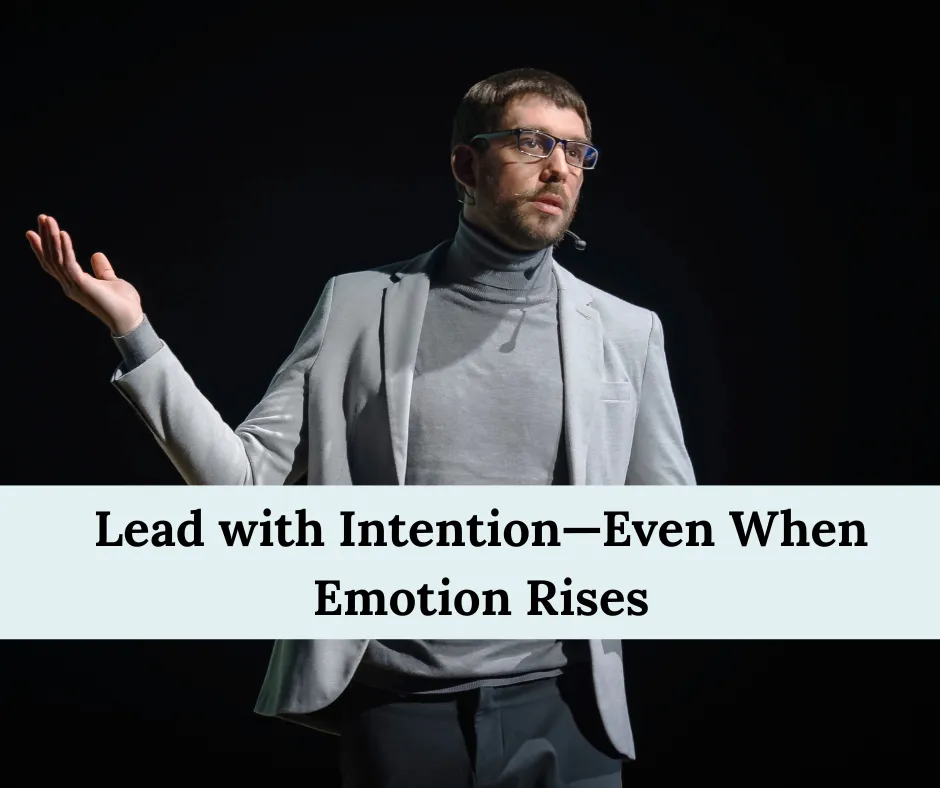
How Emotional Blind Spots Can Undermine Clear Leadership Communication
You’ve carefully crafted your message. You’ve identified the key talking points. You’ve even rehearsed how you want to deliver your message.
But the moment the conversation begins, something shifts.
Maybe you sense pushback or defensiveness. Maybe someone challenges your authority. Maybe the stakes feel high.
Suddenly and without intending to:
Your tone gets sharper.
Your voice tightens.
You cross your arms.
This is what an emotional blind spot looks like in real time.
Emotional Blind Spots are one of the most poorly understood causes of poor communication among otherwise strong leaders.
What Is an Emotional Blind Spot?
An emotional blind spot is a moment when you react emotionally to some kind of trigger and that emotion overtakes your intention. You are still speaking, but you're no longer in control of what you are saying and how you are saying it.
These blind spots usually stem from a past “traumatic” event that embedded itself in your energy system. Maybe someone asked you a question you couldn’t answer and you felt embarrassed, or you were made fun of when delivering lines in a school play.
These old experiences, which you may or may not remember, can cause you to feel:
Inadequate if you don’t know the answer
Defensive when you are questioned or challenged
Impatient when others don’t immediately get your point
Fearful of looking unprepared, unqualified, or not in control
The problem is, most people don’t realize that their communication style shifts when they’ve been triggered.
How Emotional Triggers Hijack Communication
The way you are feeling directly impacts your ability to enact Leadership Presence.
When you’re emotionally triggered:
Your tone can sharpen, often without you noticing
Your nonverbal cues may shift: you might cross your arms, speak more quickly, or shorten your sentences
You may over-explain, become defensive, or shut totally down, leaving others confused and rupturing your connection to them.
Even a perfectly crafted message will fail to impress if your delivery is closed off or reactive.
You Can’t Fix What You Don’t See
Here’s the trap: high-achieving leaders often assume they’re being clear and composed, even when they are not coming across that way.
Without honest feedback to help you develop awareness, blind spots stay invisible and will continue to trip you up.
Here are a few signs you’re being affected by hidden emotional triggers:
You’re regularly misunderstood in meetings
You feel irritated when asked difficult questions
You notice that your team hesitates to speak up
You think, “They’re just not listening,” instead of, “Did I get my message across?”
What Self-Aware Leaders Do Differently
Leaders with strong self-awareness who are open to honest feedback from trusted colleagues train themselves to recognize when emotion might be affecting their ability to communicate effectively.
They:
Pause to reset tone and intention mid-conversation
Ask for feedback on how they came across
Decompress after difficult conversations to learn what might have triggered them
Practice mindfulness or grounding strategies before high-stakes interactions
Final Thought
Being an effective communicator isn’t just about choosing the right words, it’s about managing the emotions that underlie how those words are stated.
If you want to be trusted, heard, and followed, don’t focus only on what you say.
Focus on the emotional energy that is driving how you say what you say.
If you want to uncover your emotional blind spots before they undermine your leadership presence and effectiveness, let’s talk.
Click here to Book a discovery call.
